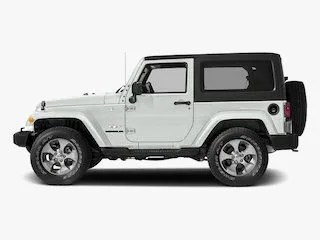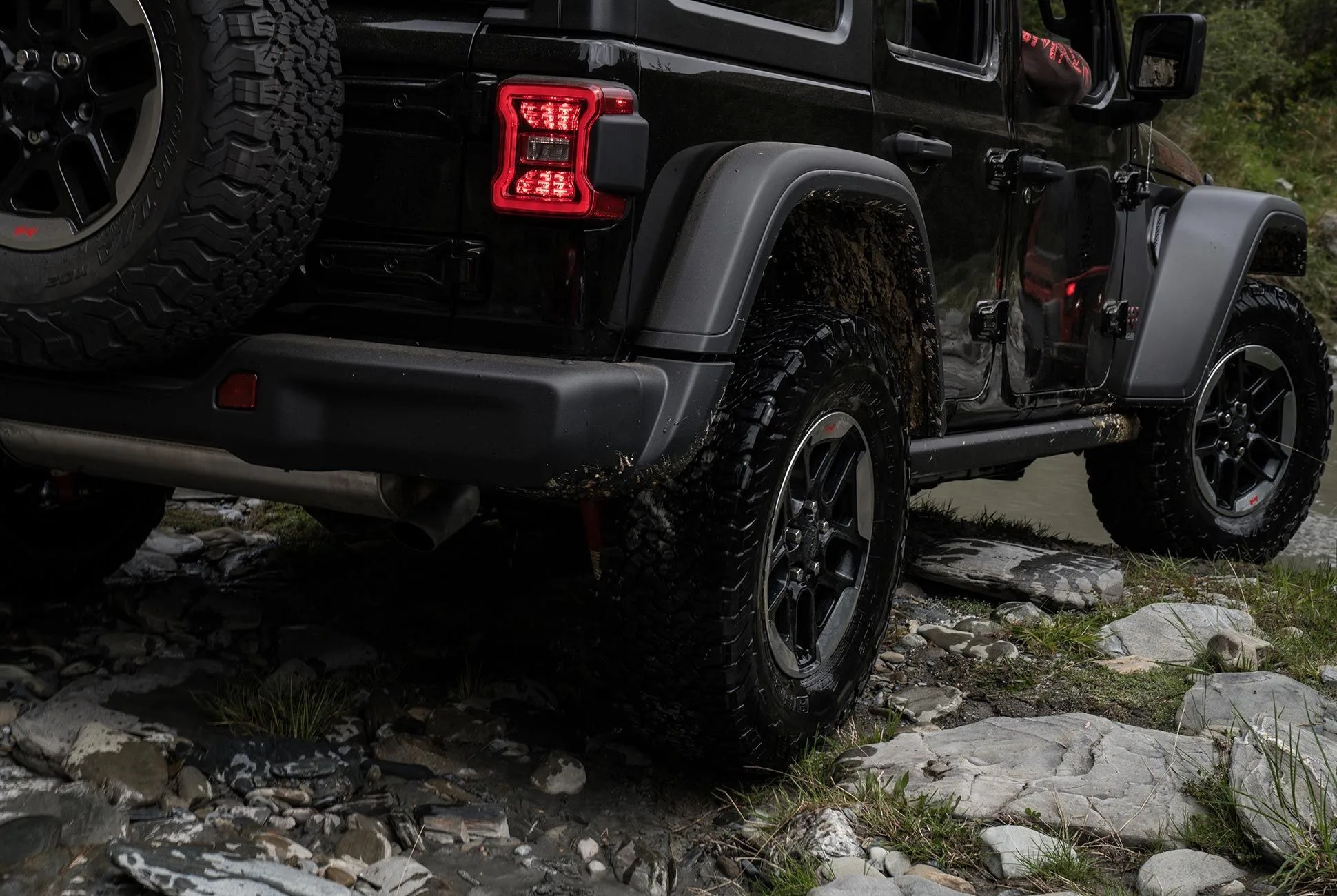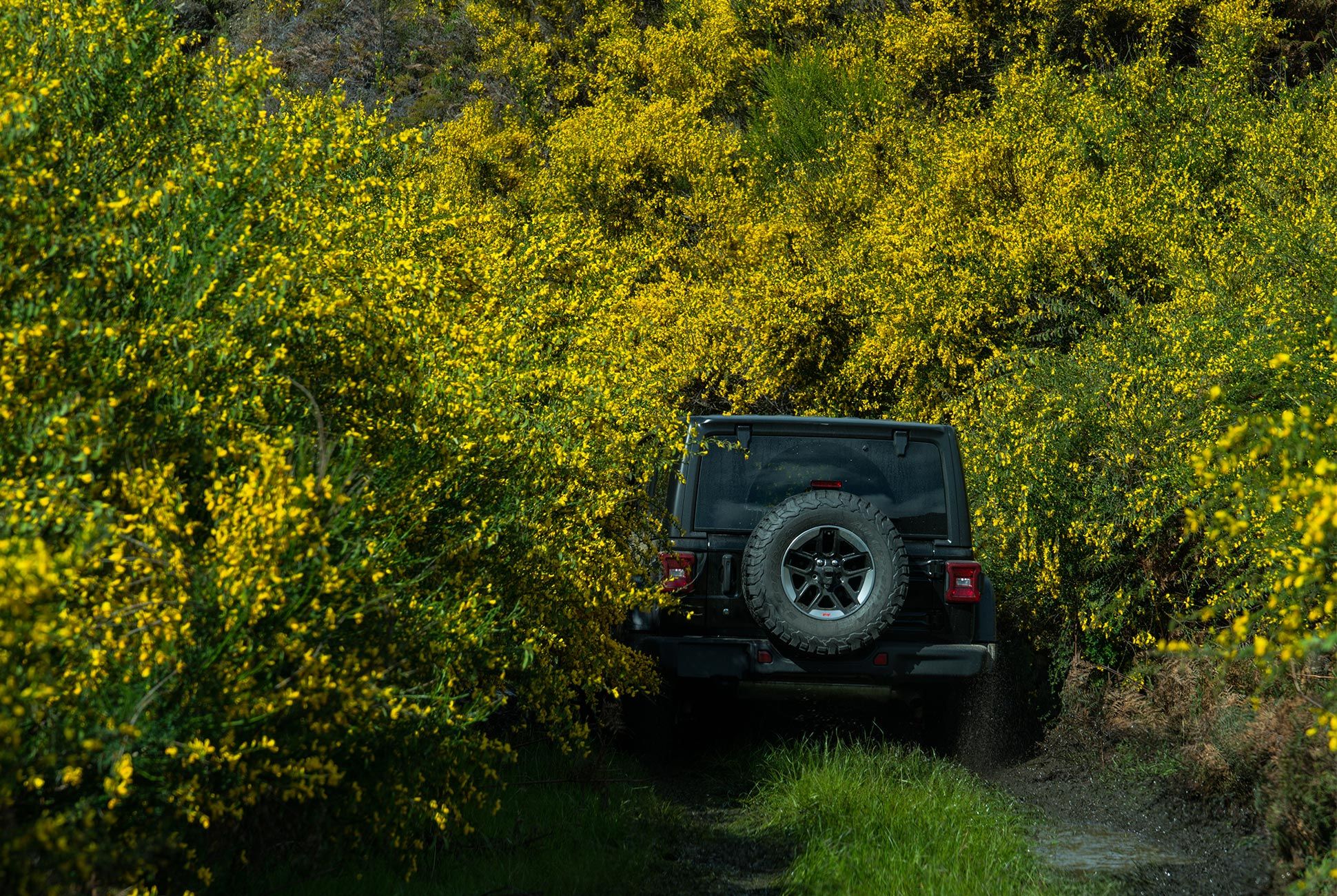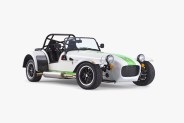15 photos
The South Island of New Zealand is a wolf in sheep’s clothing. It lures you in with green shires speckled with sheep but then rips you to shreds if you stray too far beyond them. The mountainous “Southern Alps” hide razor-sharp terrain, craggy cliffs that plummet into valleys and fjords, glacial deposits that look like billiard tables of the gods and endless dark ridges, shrouded in clouds and frighteningly ominous from every angle. This is no mere vineyard haven and sweater-factory, all verdant vistas and playful lambs; New Zealand is far more metal than you’d expect. Even the lakes aren’t to be trifled with: Wakatipu, on whose shores sits the ski-and-adventure hub of Queenstown, is more than a thousand feet deep and so cold a swimmer could perish in minutes even in summer. Venturing out from any road and the pavement yields quickly to gravel, then dirt … then fate.
In other words, it’s a fantastic place to test the new Jeep Wrangler.
Few vehicles, after all, are as eager to confront the casually cruel authors of millions of years of geological revisions — and then unceremoniously flip them off — as the Wrangler. Sure, Defenders are the go-to pack mules for vast stretches of the unpaved and unruly, and Toyota Hiluxes have a way of spontaneously respawning after being blown to bits by rebels, but the Wrangler offers far more than just utility and durability. It also offers seemingly endless capability. In its top factory guise, the Rubicon trim level, it’ll make quick work of glacial deposits and the slipperiest of mountain passes. When modded by the armies of enthusiasts in the Wrangler universe, mountains tremble in their presence. To those folks, the Wrangler is a tool, whether deployed right off the assembly line or deemed a mere starting point for upgrades. It’s a weapon for tackling all the challenges Earth can provide. No tuner road-rocket comes close when it comes to the fanatical dedication of the Wrangler’s base.
As such, the release of an all-new Wrangler, now in its fourth generation after its initial bow in 1986 — though even that was a decades-long evolution from the iconic Jeep Willys of WWII and the CJ lines that came in the interim — is a seismic event, one as carefully scrutinized as any new Porsche or Ferrari. So its debut, on a mountaintop in New Zealand where we first met the legendary trail-tamers, was no ordinary SUV launch or rote redesign briefing. It was the heritage-strong bestowment of even more capability than previously imagined — and what better setting than New Zealand’s treacherous terrain?
First, of course, we had to get off that craggy mountain, which involved lots of low-gear crawling to modulate our speed — and preserve our brakes — over some often slippery rock-on-rock terrain. It was a cold spring morning in November, with snow still on the peaks and yet another front moving in. Our caravan included four variations of the new Rubicons: a two-door with a manual transmission and the 3.6-liter Pentastar V-6, producing 285 horsepower and 260 lb-ft of torque. A four-door with the new 270-hp/295 lb-ft. turbocharged four-cylinder, which is actually a mild hybrid is also available, as well as a hardtop four-door V-6 and a soft-top four-door V-6. (A diesel variant will arrive in 2019. The new lineup also includes an electrically powered soft-top, but that wasn’t available yet.) Pulling down fabric roofs manually was in the past a daunting proposition for Jeep owners, but now it’s a breeze thanks to a smart mechanism, tensioned with clock springs, that gracefully slips the roof rearward and out of sight.
2018 Jeep Wrangler Specs

















